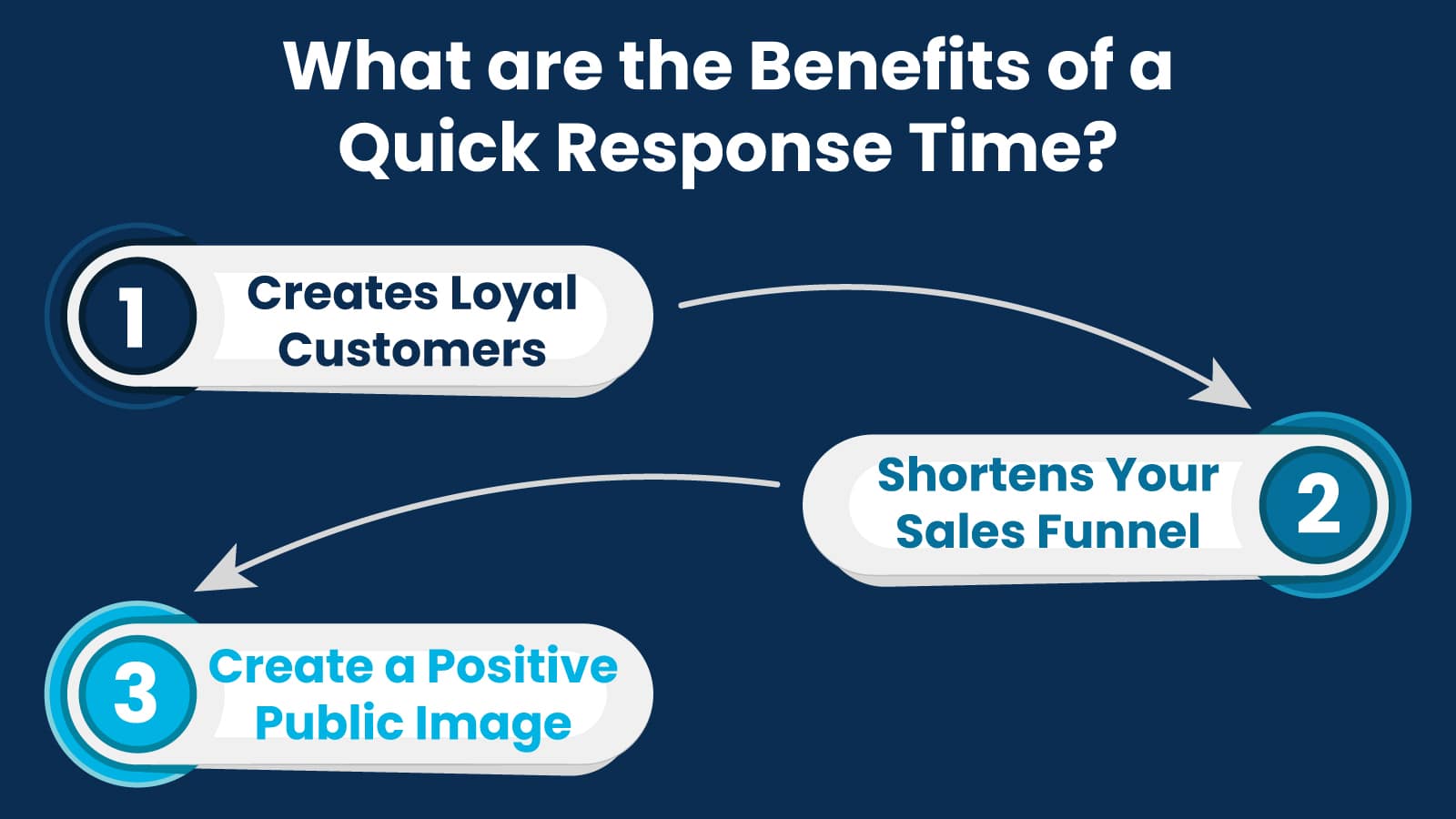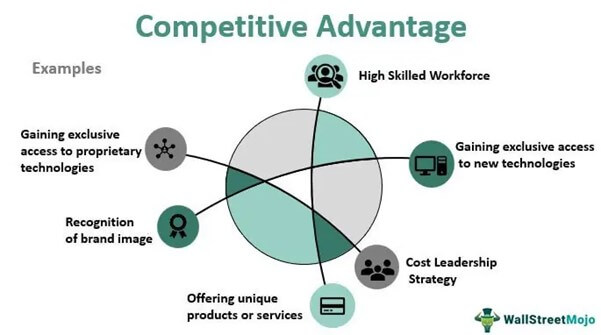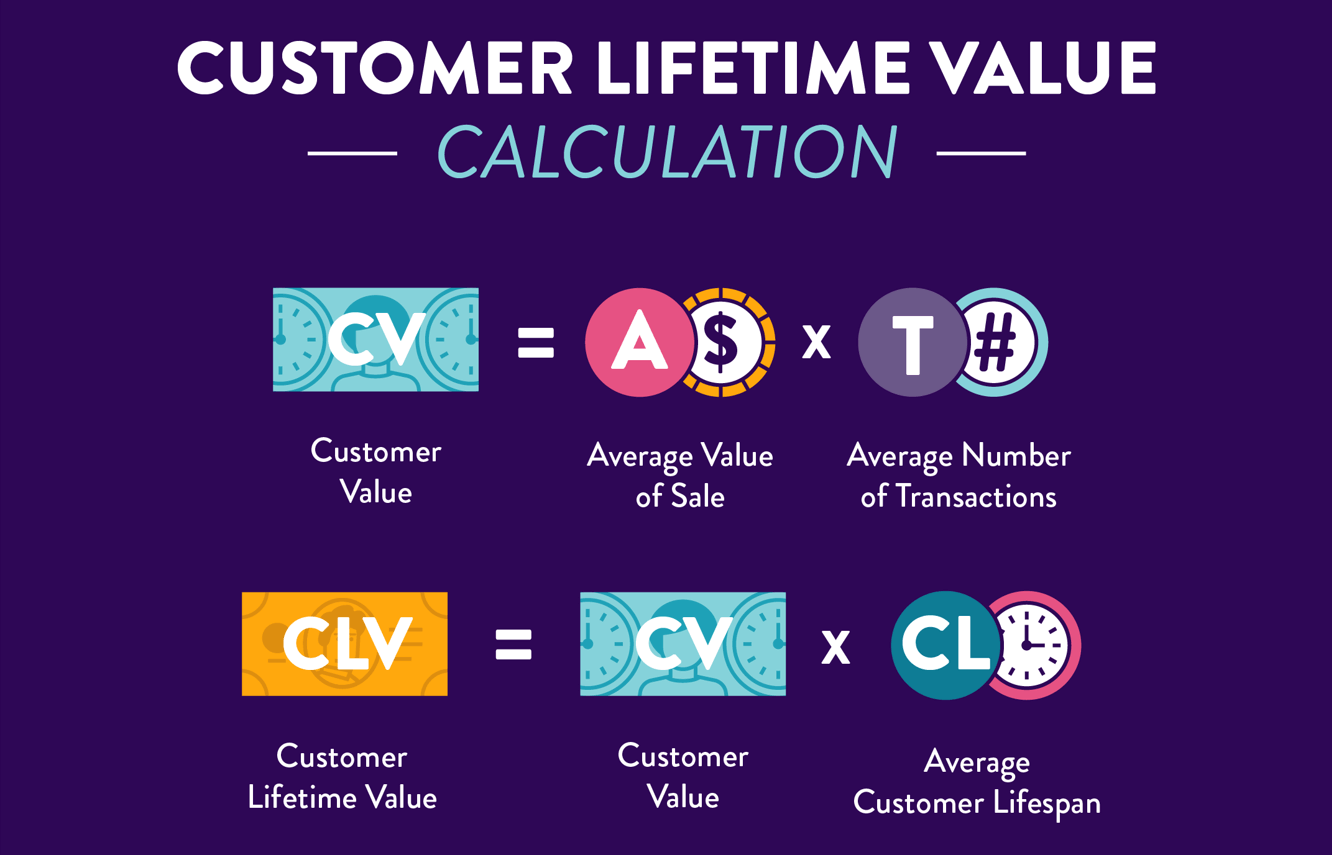Table of Content
- Key Takeaways
- Defining the Concept
- Significance of Digital Customer Experience
- Elements of a Successful Strategy
- Managing Digital Customer Experience
- Enhancing the Digital Journey
- Business Benefits of Excellence in DCX
- Crafting Impactful Digital Experiences
- Future of Digital Customer Experience
- Summary
- Frequently Asked Questions
- Key Takeaways
- Defining the Concept
- Significance of Digital Customer Experience
- Elements of a Successful Strategy
- Managing Digital Customer Experience
- Enhancing the Digital Journey
- Business Benefits of Excellence in DCX
- Crafting Impactful Digital Experiences
- Future of Digital Customer Experience
- Summary
- Frequently Asked Questions
In today's digital landscape, providing an exceptional digital customer experience with service convenience and channel flexibility is paramount for businesses looking to thrive among consumers and loyal customers. With the ever-increasing reliance on online interactions in the digital world, optimizing every touchpoint of the customer journey, through digital channels, has become a necessity rather than a luxury. Understanding the historical context of customer service evolution sheds light on the significance of adapting to help consumers meet modern consumer expectations seamlessly through consistent experience on digital channels.
Embracing the shift towards digital customer experience not only enhances brand loyalty but also drives revenue growth and fosters long-term relationships with customers. By prioritizing user-friendly interfaces, personalized interactions, and streamlined processes in digital channels, businesses can differentiate themselves in a competitive market while delivering unparalleled value to their clientele.
Key Takeaways
- Understanding and defining digital customer experience is crucial for businesses to meet the evolving needs of their customers in the digital age.
- Implementing a successful digital customer experience strategy involves focusing on elements like personalization, omnichannel presence, and seamless interactions.
- Effective management of digital customer experience requires continuous monitoring, gathering feedback, and making necessary adjustments to enhance customer satisfaction.
- To improve the digital journey for customers, businesses should prioritize user-friendly interfaces, efficient navigation, and quick problem resolution.
- Excelling in digital customer experience can lead to various business benefits such as increased customer loyalty, higher conversion rates, and improved brand reputation.
- By crafting impactful digital experiences that resonate with customers, businesses can create lasting connections and drive long-term success in the digital landscape.
Defining the Concept
Importance in Today's Business

Digital customer experience refers to online interactions between customers and a brand. Perception from these interactions significantly impacts customer relationships. The ease of navigation, responsiveness, and overall satisfaction play a crucial role.
Customers today expect seamless digital experiences, making it vital for businesses to prioritize their online presence. By providing a user-friendly website, quick response times, and personalized services, brands can enhance customer loyalty. These operational aspects directly influence the overall brand image and reputation.
- Customers value convenience and efficiency in their online interactions.
- Personalization and tailored recommendations can significantly improve customer satisfaction.
Digital vs. Traditional Experience

Customers are increasingly willing to pay more for exceptional digital experiences. Emotionally connected customers tend to have a higher lifetime value as they are more likely to remain loyal over time. Brands that invest in creating emotional connections through digital channels often see higher profitability.
- Emotionally engaged customers are more likely to recommend the brand to others.
- Positive online experiences lead to increased customer retention rates.
In contrast, dissatisfied customers are quick to switch to competitors due to service-related issues encountered during their digital interactions. The ease of comparison between different brands online makes it easier for customers to explore alternatives when faced with subpar service levels.
- Negative reviews or poor online experiences can tarnish a brand's reputation quickly.
- Seamless digital transactions and responsive customer support are crucial for retaining customers.
Significance of Digital Customer Experience
Business Landscape Today

Digital customer experience (DCX) stands out from traditional methods by leveraging online platforms for interactions. It embodies empathy and trust-building efforts through virtual touchpoints, enhancing customer relationships. Consistency across all touchpoints is crucial for a seamless DCX.
In the modern business landscape, companies must adapt to the digital shift to meet evolving consumer preferences. This involves understanding that DCX is not merely a transactional process but an ongoing relationship-building journey. By prioritizing consistency in interactions, brands can foster long-term loyalty and trust.
Customer Expectations
Surprisingly, 42% of companies do not actively collect feedback from their customers, missing out on valuable insights for improvement. This highlights the importance of actively seeking feedback to refine DCX strategies continuously. Mapping the customer journey is essential for tailoring unique experiences that resonate with individual preferences.
Customer data and digital experience platforms play a pivotal role in managing DCX effectively. These tools enable businesses to gather, analyze, and utilize customer information to personalize interactions and anticipate needs. By harnessing data-driven insights, companies can enhance customer satisfaction levels significantly.
Competitive Advantage

Consistency throughout the customer journey is a non-negotiable aspect of successful DCX strategies. Customers expect seamless transitions between online and offline touchpoints, creating a unified brand experience. Personalization further elevates DCX by catering to specific needs and preferences, fostering deeper connections with customers.
Personalized digital experiences are no longer optional but imperative for brands seeking a competitive edge. By tailoring interactions based on individual behaviors and preferences, businesses can create memorable moments that resonate with customers. Understanding audience segments and identifying personas are key steps towards delivering personalized experiences that drive engagement.
Elements of a Successful Strategy
![Guide to Digital Customer Experience (DCX) [+Use Cases]](https://ozonetel.com/wp-content/uploads/2024/03/Challenges-to-Seamless-Digital-CX.jpg)
Core Principles
Outstanding digital customer experience (DCX) serves as a crucial differentiator for businesses, setting them apart in the competitive landscape. By prioritizing success, companies can achieve higher customer retention rates and lower service costs. Moreover, excelling in DCX contributes significantly to building greater brand equity.
In the realm of DCX, core principles such as empathy and trust-building play pivotal roles in creating seamless experiences for customers. The human connection efforts embedded within these principles are essential for fostering strong relationships with clients. Consistent iteration is key to delivering powerful digital journeys that leave a lasting impact on users.
Seamless Experiences
Seamless experiences are at the heart of successful DCX strategies, underpinned by the fundamental principles of empathy and trust-building. Human-centric approaches that prioritize understanding and addressing customer needs are paramount in ensuring exceptional digital interactions. Through continuous refinement and adaptation, businesses can provide customers with smooth and engaging journeys across various touchpoints.
Emotional connections form the cornerstone of effective DCX initiatives, emphasizing the significance of creating meaningful interactions with customers. Technical proficiency plays a critical role in shaping these interactions, enabling businesses to deliver personalized and efficient services online. Furthermore, creativity emerges as a vital component in crafting unique and memorable digital experiences that resonate with customers on an emotional level.
Emotional Connections
To enhance success in DCX, organizations must focus on cultivating seamless experiences that forge strong emotional connections with customers. By leveraging technical expertise to streamline digital interactions, businesses can ensure smooth and intuitive user experiences. Incorporating creative elements into digital journeys adds depth and resonance to customer engagements, fostering long-term loyalty and satisfaction.
One statistic that highlights the importance of emotional connections in customer experience is that 86% of buyers are willing to pay more for a great customer experience. This emphasizes the significance of cultivating seamless and emotionally resonant interactions to drive customer loyalty and satisfaction.
Managing Digital Customer Experience
Effective Management Practices

Emotional connections play a crucial role in digital customer experience (DCX) by fostering loyalty and trust. Customers who feel emotionally connected are more likely to stay with a brand, increasing customer lifetime value.
Creating emotional engagement in DCX can lead to higher customer retention rates and boost overall satisfaction levels. By understanding and catering to customers' emotions, businesses can build strong relationships that drive repeat purchases.
Emotional connections also influence customer recommendations. Satisfied customers who have positive emotional experiences are more inclined to share their experiences with others, leading to word-of-mouth referrals and organic growth for the business.
- Emotional connections drive loyalty
- Higher customer retention rates
- Boosts overall satisfaction levels
Continuous Improvement
Knowing the audience is paramount in effective DCX management. Understanding customers' preferences, behaviors, and pain points enables businesses to tailor their digital experiences accordingly for maximum impact.
Addressing each phase of the customer journey is essential for delivering a seamless experience. From awareness to purchase and post-purchase support, every touchpoint should be optimized to ensure a consistent brand experience.
Personalization techniques such as targeted messaging, product recommendations, and customized offers are instrumental in enhancing DCX. By delivering personalized interactions based on customer data, businesses can create meaningful engagements that drive conversions.
- Tailoring experiences to audience preferences
- Optimizing every touchpoint in the customer journey
- Implementing personalization techniques effectively
Feedback and Transparency
Continuous improvement is key in DCX management to adapt to changing customer needs and market trends. Gathering feedback through surveys, reviews, and social media allows businesses to identify areas for enhancement.
Customer feedback serves as valuable insights for improving digital experiences. By listening to customers' suggestions and addressing their concerns promptly, businesses can enhance their offerings and deliver customer-centric solutions.
Consistent iteration is crucial for ongoing improvement in DCX. By analyzing feedback data regularly and implementing necessary changes, businesses can stay ahead of the competition and meet evolving customer expectations.
- Gathering feedback through various channels
- Listening to customers' suggestions
- Implementing necessary changes promptly
Enhancing the Digital Journey
Personalization Techniques
Personalization in digital customer experience (DCX) often falls short due to companies neglecting feedback collection. This lack of insight hinders the ability to tailor experiences to individual preferences. Transparency is crucial for fostering trust and loyalty in customer interactions, leading to improved satisfaction levels.
Customer feedback serves as a valuable asset in enhancing digital experiences by providing insights into preferences and pain points. Companies can leverage this data to customize interactions, offer relevant recommendations, and address issues promptly. Implementing effective personalization techniques based on feedback results in enhanced customer engagement and long-term relationships.
Omnichannel Consistency
Personalization plays a pivotal role in DCX by enabling companies to deliver tailored experiences across various channels. By leveraging customer data effectively, businesses can create seamless journeys that transcend individual touchpoints. Consistent personalization enhances customer experiences by offering relevant content, promotions, and support based on individual needs.
Customer data forms the backbone of implementing successful personalization techniques in DCX. By analyzing behavior patterns and preferences, companies can craft targeted strategies that resonate with customers at each interaction point. This approach not only boosts engagement but also fosters brand loyalty and advocacy among customers.
Customer Journey Stages
Consistency across all customer touchpoints is essential for providing a cohesive digital journey. Ensuring omnichannel consistency requires aligning messaging, branding, and service quality across various platforms. Challenges arise in maintaining this consistency due to fragmented systems and siloed data within organizations.
Despite the challenges, offering a seamless experience across channels brings numerous benefits to both customers and businesses alike. A unified customer journey leads to increased satisfaction levels, higher retention rates, and improved brand perception. By delivering consistent experiences, companies can build trust and loyalty among their customer base.
Business Benefits of Excellence in DCX
Advantages Overview
Customer journeys consist of various stages like awareness, consideration, purchase, and retention. Addressing each phase is crucial in managing Digital Customer Experience (DCX). Personalized experiences enhance engagement at every journey stage.
Businesses benefit significantly from DCX excellence. It leads to improved customer satisfaction, loyalty, and advocacy. Higher customer retention rates are a direct result of effective DCX strategies. Reduced churn rates contribute to greater brand equity.
Leading in the Market
DCX excellence offers a competitive edge by providing seamless and personalized interactions with customers. Companies excelling in DCX witness increased customer satisfaction levels. This results in higher customer retention rates and boosts overall profitability.
Companies like Chick-fil-A, Brompton Bicycle, Thule, and The R&A have set exemplary standards in DCX management. Their success stories highlight the importance of prioritizing customer-centric approaches. Following industry leaders in DCX can guide businesses towards sustainable growth.
Long-term Business Growth
Chick-fil-A's commitment to exceptional service has earned them a loyal customer base and increased market share. Brompton Bicycle's focus on innovation and customer feedback has led to unparalleled success in the cycling industry. Thule's dedication to quality products and personalized experiences has solidified its position as a market leader.
The R&A's emphasis on creating memorable experiences for golf enthusiasts has established them as a prestigious organization in the sports industry. These companies showcase how investing in DCX can drive long-term business growth and foster lasting relationships with customers.
Crafting Impactful Digital Experiences
Key Practices
Digital Customer Experience (DCX) excellence plays a crucial role in long-term business growth. By focusing on delivering exceptional digital experiences, companies can enhance customer satisfaction, leading to increased loyalty and advocacy. This, in turn, translates into higher customer lifetime value and sustainable revenue growth.
Customer retention is a cornerstone of sustainable business growth. Investing in DCX not only attracts new customers but also nurtures existing relationships. By prioritizing seamless interactions, personalized services, and proactive engagement strategies, businesses can strengthen customer loyalty and reduce churn rates.
Investing in DCX is essential for future success in today's competitive landscape. Companies that prioritize digital experience innovation are better positioned to adapt to evolving customer needs and market trends. By leveraging technology to create engaging, user-centric experiences, organizations can stay ahead of the curve and drive long-term growth.
Emotional Engagement
Effective DCX management involves identifying customer personas to understand their preferences, behaviors, and pain points. By creating detailed customer profiles, businesses can tailor their digital experiences to meet specific needs, enhancing overall satisfaction and engagement levels.
A digital experience platform serves as a centralized solution for implementing key DCX practices. It enables companies to design, deliver, and optimize digital experiences across various touchpoints seamlessly. By leveraging data insights and automation capabilities, organizations can streamline processes and deliver personalized interactions at scale.
Creating Powerful Platforms

Emotional engagement lies at the heart of successful DCX strategies. Establishing emotional connections with customers fosters trust, loyalty, and brand advocacy. By designing emotionally resonant experiences that evoke positive feelings and responses, companies can differentiate themselves in the market and drive long-term customer relationships.
Higher customer loyalty is often a result of strong emotional connections forged through meaningful interactions. When customers feel understood, valued, and appreciated by a brand, they are more likely to remain loyal over time. Building emotional bonds through personalized communications and empathetic support enhances customer satisfaction and retention rates.
Empathy plays a pivotal role in building emotional connections with customers. By demonstrating understanding, compassion, and responsiveness in every interaction, businesses can humanize the digital experience and create lasting impressions. Empathetic communication fosters trust and loyalty while showcasing a brand's commitment to prioritizing customer needs.
Future of Digital Customer Experience
Trends and Innovations
Digital customer experience (DCX) is evolving rapidly, making it crucial for businesses to adapt. Having a digital experience platform is essential for providing seamless interactions across various touchpoints. This platform integrates data, content, and applications to deliver personalized experiences.
Technology plays a pivotal role in shaping powerful digital platforms. AI and machine learning enhance customer insights, enabling businesses to anticipate needs effectively. Cloud computing ensures scalability and flexibility, vital for meeting dynamic customer demands.
Technical proficiency is paramount in platform development to ensure optimal performance and security. Continuous monitoring and updates are necessary to keep pace with evolving technologies and consumer preferences.
Role in Business Strategies

Businesses must stay abreast of current trends and innovations in DCX to remain competitive. Personalization, omnichannel experiences, and real-time engagement are key focus areas driving customer satisfaction.
Emerging technologies like AR/VR, IoT, and blockchain are revolutionizing customer experiences. These technologies enhance engagement levels, streamline processes, and foster deeper connections with customers.
Staying updated with industry trends is critical for businesses looking to deliver exceptional customer experiences. Understanding changing preferences enables companies to tailor strategies effectively and build long-lasting relationships.
Next Steps for Businesses
DCX plays a pivotal role in shaping business strategies, influencing decision-making processes from product development to marketing initiatives. Prioritizing customer-centric approaches enhances overall brand perception.
Customer acquisition and retention are directly impacted by the quality of DCX offered. Seamless interactions, personalized recommendations, and efficient issue resolution contribute significantly to customer loyalty.
Aligning business strategies with customer expectations is imperative for sustainable growth. Anticipating needs, addressing pain points proactively, and fostering trust through transparent communication are key elements in ensuring customer satisfaction.
Enhancing Digital Customer Experience with MarketersMEDIA

Providing a seamless and personalized customer experience is crucial for businesses to stay competitive. MarketersMEDIA offers a range of tools and services to help businesses improve their digital customer experience. From press release distribution to media monitoring, MarketersMEDIA can help businesses connect with their target audience effectively.
One key aspect of enhancing digital customer experience is through targeted and relevant content distribution. By utilizing MarketersMEDIA's press release distribution services, businesses can ensure that their message reaches the right audience at the right time. This can help improve brand visibility and engagement, ultimately leading to a better overall customer experience.
In addition, MarketersMEDIA's media monitoring services can help businesses stay on top of customer feedback and sentiment. By monitoring online mentions and reviews, businesses can quickly address any issues or concerns raised by customers, showing that they value customer feedback and are committed to providing a positive experience.
Summary
You've now grasped the essence of digital customer experience (DCX) - its importance, key elements, management strategies, and future trends. By understanding how to craft impactful digital experiences and the business benefits they bring, you're equipped to enhance your organization's DCX significantly. Embracing excellence in DCX not only satisfies customers but also boosts your brand's reputation and competitiveness in the digital landscape.
To stay ahead, continuously refine your DCX strategy, adapt to evolving technologies, and prioritize customer-centric approaches. By focusing on delivering exceptional digital experiences, you can foster lasting relationships with your audience, drive loyalty, and ultimately achieve sustainable business growth.
Frequently Asked Questions
What is Digital Customer Experience (DCX)?
Digital Customer Experience (DCX) refers to the interaction between a customer and a company through digital channels like websites, mobile apps, or social media platforms to deliver seamless, personalized, and engaging experiences.
Why is Digital Customer Experience important for businesses?
Enhancing Digital Customer Experience (DCX) is crucial for businesses as it helps in building strong customer relationships, increasing brand loyalty, driving revenue growth, and gaining a competitive edge in the market by meeting customers' expectations and needs effectively.
What are the key elements of a successful Digital Customer Experience strategy for the target audience, loyal customers, online channels, and new customers?
A successful Digital Customer Experience (DCX) strategy includes personalization, omnichannel consistency, user-friendly interfaces, data-driven insights, quick response times, continuous improvement based on feedback, and a focus on delivering value to customers at every touchpoint.
How can companies manage Digital Customer Experience effectively?
Companies can manage Digital Customer Experience (DCX) effectively by investing in technology that enables seamless interactions, training employees to deliver exceptional service, monitoring customer feedback and behavior analytics, implementing agile processes for quick adjustments, and prioritizing continuous innovation in digital offerings.
What are the business benefits of excelling in Digital Customer Experience for loyal customers, new customers, and service convenience?
Excellence in Digital Customer Experience (DCX) can lead to increased customer satisfaction, higher retention rates, improved brand reputation, enhanced customer lifetime value, reduced operational costs through automation efficiencies, and ultimately drive sustainable business growth and profitability.
Free Press Release Template
Tell us where to send your PDF:







![10 Free Press Release Templates [Plus a Step-by-Step Guide]](https://marketersmedia.com/wp-content/uploads/2024/08/10-Free-Press-Release-Templates-Plus-a-Step-by-Step-Guide.png)